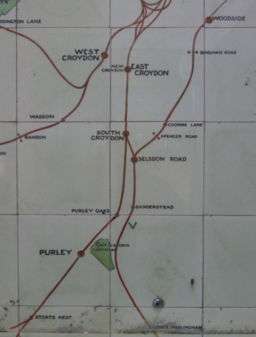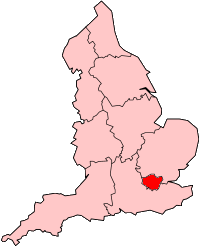Woodside and South Croydon Joint Railway
| Woodside & | ||||||||||||||||||||||||||||||||||||||||||||||||||||||||||||||||||||||||||||||||||||||||||||||||||||||||||||||||||||||||||||||||||||||||||||
|---|---|---|---|---|---|---|---|---|---|---|---|---|---|---|---|---|---|---|---|---|---|---|---|---|---|---|---|---|---|---|---|---|---|---|---|---|---|---|---|---|---|---|---|---|---|---|---|---|---|---|---|---|---|---|---|---|---|---|---|---|---|---|---|---|---|---|---|---|---|---|---|---|---|---|---|---|---|---|---|---|---|---|---|---|---|---|---|---|---|---|---|---|---|---|---|---|---|---|---|---|---|---|---|---|---|---|---|---|---|---|---|---|---|---|---|---|---|---|---|---|---|---|---|---|---|---|---|---|---|---|---|---|---|---|---|---|---|---|---|---|
Legend | ||||||||||||||||||||||||||||||||||||||||||||||||||||||||||||||||||||||||||||||||||||||||||||||||||||||||||||||||||||||||||||||||||||||||||||
| ||||||||||||||||||||||||||||||||||||||||||||||||||||||||||||||||||||||||||||||||||||||||||||||||||||||||||||||||||||||||||||||||||||||||||||


The Woodside and South Croydon Joint Railway (W&SC) was a short, relatively short-lived and unsuccessful railway in the London Borough of Croydon in London, England. Its site is now largely occupied by Tramlink.
Route
Junction with the Addiscombe branch of the South Eastern Railway. Now Woodside tram stop. Tramlink follows most of the route of the W&SC from here to Coombe Road.
The railway was on an embankment here and crossed over Lower Addiscombe Road and Bingham Road on bridges. The embankment has been removed and Tramlink crosses both these roads at grade. The station was just south of Bingham Road. Addiscombe tram stop is between Lower Addiscombe Road and Bingham Road. (Addiscombe railway station was about 500 m to the west - East India Way has been built on its site.) About 200 m east of Sandilands tram stop the Tramlink route from central Croydon divides and both branches follow the route of the W&SC. The northern line takes a sharp turn under Addiscombe Road to join the route of the railway to Woodside, Elmers End and Beckenham Junction. The other line turns southward into the Park Hill tunnels towards Coombe Road and to New Addington.
- Coombe Road station, originally Coombe Lane
Just south of here Tramlink takes a sharp turn east to diverge from the W&SC route, and reaches Lloyd Park tram stop after about 200 m. Coombe Lane tram stop is about 2 km further east.
Hidden in an alleyway between Spencer Road and Birdhurst Rise. The railway crossed Croham Road on a bridge, still extant.
- Selsdon station, originally Selsdon Road
Junction with the Oxted Line, the former Croydon, Oxted and East Grinstead Railway. The W&SC platforms are still intact, as is the spur that leads to the old goods yard and oil storage depot.
History
Opening
The line was built jointly by the London, Brighton and South Coast Railway (LBSCR) and the South Eastern Railway (SER). Although the intention had been to open in 1882, completion was delayed until August 1885 for reasons including bad weather disrupting construction. Success was limited even at the beginning, and following a closure proposal as early as 1895 railmotors were introduced in 1905 in an attempt to improve efficiency and counteract competition from trams and buses - see a picture of one of the railmotors here. At this time the two halts were opened: although Spencer Road met with little success, Bingham Road attracted more custom with its main-road location and from passengers interchanging with trams and buses; it was rebuilt as a full station (see below).
World War I
The first closure came in 1917, although services had been suspended for the most part since 1915, to save money and resources for the war effort. It was still possible for diverted trains and excursions or other special services to use the line.
Changes in 1935
Major changes came in 1935:
- The line was electrified on the third rail system;
- Bingham Road halt was rebuilt as a full station;
- Coombe Lane was rebuilt and renamed Coombe Road;
- Selsdon Road was renamed Selsdon, although the village of that name was approximately 2 miles away;
- The remains of Spencer Road halt were cleared away;
- A new half-hourly service, seven days a week, augmented during weekday peak hours, was introduced - this compares with the previous best service level of 16 trains daily from 1906 until 1915;
- Services ran direct to London at all times, between Sanderstead and either London Charing Cross or London Cannon Street.
The electric service commenced on 30 September 1935, but the decline towards final closure began soon afterwards.
Decline
Services were reduced during World War II, with the withdrawal of Saturday afternoon and Sunday trains. In the 1950s through trains to London ran at peak hours only, with a Sanderstead–Elmers End shuttle at other times, connecting with Hayes–London trains). A closure threat came in the Beeching Report of 1963, but local pressure (through, for example, the newly formed Croydon Transport Users' Association) brought about a reprieve. Saturday trains were withdrawn in 1967. In 1976 through trains to London were withdrawn, leaving a Sanderstead–Elmers End peak hours shuttle service;
Closure
Closure took place on 13 May 1983: by the time the line closed, estimated usage was less than 200 passengers a day. By 1983 the track was in very poor condition, and in view of the line's low patronage British Rail could not financially justify wholesale renewal. This was a factor in closure.
1980 timetable: an illustrative example
This table shows the up service three years before closure:[1]
| Sanderstead | Selsdon | Coombe Road | Bingham Road | Woodside | Elmers End |
|---|---|---|---|---|---|
| Morning Peak | |||||
| 06:45 | 06:47 | 06:49 | 06:51 | 06:53 | 06:56 |
| 07:15 | 07:17 | 07:19 | 07:21 | 07:23 | 07:26 |
| 07:32 | 07:37 | 07:39 | 07:41 | 07:43 | 07:46 |
| 07:53 | 07:57 | 07:59 | 08:01 | 08:03 | 08:06 |
| 08:14 | 08:17 | 08:19 | 08:21 | 08:23 | 08:26 |
| 08:32 | 08:37 | 08:39 | 08:41 | 08:43 | 08:46 |
| — | 08:57 | 08:59 | 09:01 | 09:03 | 09:06 |
| 09:15 | 09:17 | 09:19 | 09:21 | 09:23 | 09:26 |
| 09:48 | 09:50 | 09:52 | 09:54 | 09:57 | 10:00 |
| Evening Peak | |||||
| 16:15 | 16:17 | 16:19 | 16:21 | 16:23 | 16:26 |
| 16:31 | 16:37 | 16:39 | 16:41 | 16:43 | 16:46 |
| 16:52 | 16:57 | 16:59 | 17:01 | 17:03 | 17:06 |
| 17:12 | 17:17 | 17:19 | 17:21 | 17:23 | 17:26 |
| — | 17:37 | 17:39 | 17:41 | 17:43 | 17:46 |
| 17:55 | 17:57 | 17:59 | 18:01 | 18:03 | 18:06 |
| 18:15 | 18:17 | 18:19 | 18:21 | 18:23 | 18:26 |
| 18:37 | 18:39 | 18:41 | 18:43 | 18:45 | 18:48 |
| 18:50 | 18:52 | — | — | — | 18:59 |
| 19:15 | 19:17 | 19:19 | 19:22 | 19:24 | 19:27 |
Two trains per day started from and terminated at Selsdon rather than Sanderstead because of the lack of paths on the section shared with the Oxted Line.
See also
- Addiscombe Line
- Coombe, Croydon
- South Croydon
- Sanderstead station
- List of closed railway stations in Britain
References
- ↑ British Rail timetable leaflet 12 May 1980 to 10 May 1981; form number BR35065/137
External links
- A page about the railway from Transport of Delight
- Bingham Road halt and other details from Subterranea Britannica
- A singularly unedifying photograph of the site of Spencer Road Halt
- A pictorial look at the railway from Disused Railways
- Film of the last train over the line in 1983 on YouTube
